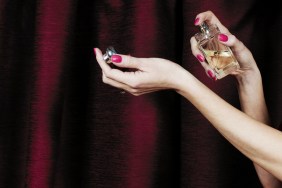There are loads of award-winning, intoxicating perfumes on the market, but who wants to smell like everyone else? Imagine a one-of-a-kind fragrance that has been designed based on your favorite scents and body chemistry. Suddenly that off-the-shelf perfume doesn’t seem as appealing. The only downside with bespoke scents is that they come with a high price tag. Don’t give up just yet because fragrance cocktailing is the clever compromise that allows us to get a customized perfume without the hefty price tag.
Fragrance cocktailing involves mixing different ready-made perfumes together to come up with a unique scent. It’s a simple concept that presents loads of possibilities. As with anything experimental, it involves some trial and error, which can sometimes lead to less-than-perfect results. So, we asked the experts how to layer perfume like a pro.
Start With the Right Foundation
Before fragrance cocktailing, it’s important to have a collection of favorite perfumes. Brian Jeong and Phil Wong, co-founders of Hawthorne for Men, tell us, “Having a solid foundation is very important when building on top of it through mixing. Once you have your ‘palette’ or core rotation, you should think about what parts of each fragrance you enjoy the most. You can then find other fragrances that enhance that element and use them to create your mix.”
[ We Rank the 10 Most Popular Women’s Fragrances of the Year ]
Try Single Notes
Patti Kapla from Fragrance.com reveals that single note or very basic fragrances are easiest to start out with. Fragrance cocktailing newbies can even pick up different fragrance kits that are designed to be worn together, such as the Mixologie Blendable Perfume Collection ($99) or the Commodity Cocktail Kit ($26).
Stick With Similar Scent Families
Knowing fragrance categories (floral, woody, citrus, oriental, gourmand, etc.) makes it easier to layer perfume. Kapla explains that a general rule of thumb is to mix scents that are in the same family or in complementary ones.
When mixing fragrances in one category, such as citrus, consider the notes in each perfume and try blending different pairings. For example, a light citrus with notes of lemon and bergamot paired with a darker citrus containing things like blood orange, dark plum and yuzu is a good mix, says Steve Johnson, scent sommelier for Scentbird.
Once you’ve mastered working with similar fragrance categories, Jeong and Wong recommend branching out across families. They suggest adding a little twist to a favorite fragrance. For instance, give a floral scent an update by adding some spice or wood notes.
Mix Different Types
There’s no need to only mix colognes with colognes and eau de toilettes with eau de toilettes. All our experts agree that it’s OK to mix and match EDTs, EDPs, colognes and body sprays. When layering different ones, Jeong and Wong say it’s best to remember that lower concentration fragrances, like EDTs, usually disappear faster so that can impact the final result.
Don’t Rub Wrists Together
Rubbing wrists together is a big no-no because it “strips” the fragrance of its top notes. Jeong and Wong liken it to smearing a beautiful painting. (Whoops.) For perfume layering, spray the scents on top of each other and let them intermingle for the best results.
Think About Texture
Yup, fragrances have texture. Johnson explains, “Perfumes with powerful notes like gardenia, tuberose, benzoin, labdanum, incense, cinnamon and coriander will try and dominate a blend. Pair them with lighter, similar notes to temper their enthusiasm and highlight their unique drama.” He adds, “Lilies and violets are light but powdery and will complement the strong powder facet in tuberose well. If you have a deep resinous base with benzoin, labdanum or opoponax in one perfume, pair it with a light herbal patchouli note. Or go in an earthy direction with vetiver or oak moss.”
Watch Out for Complex Fragrances
Think about perfume like fashion. When it comes to something complex, it’s best to pair it with something simple. Johnson recommends tempering more intense scents with light floral notes, such as linden blossoms, lilies and lily of the valley.
Think Beyond Perfume
Fragrance cocktailing can go beyond layering two scents on top of each other. Kapla says that it can be started in the shower with a scented body wash. Adding body creams or oils can also produce interesting results. Different placements of scents can also result in something unique. Kapla gives the example of applying one scent to wrists and another to the neck.
Have Fun With It
Remember, this isn’t a precise science experiment. Fragrance cocktailing is supposed to be fun, so don’t get hung up about crafting the “perfect scent.” The guidelines are to help newbies; they’re not set-in-stone rules. Most importantly, it’s about finding something that appeals to you. As Kapla says, “Fragrance is the finishing touch to a wardrobe — enjoy it!”
[ 10 New Spring Perfumes That Are Perfect for Warm Weather ]






